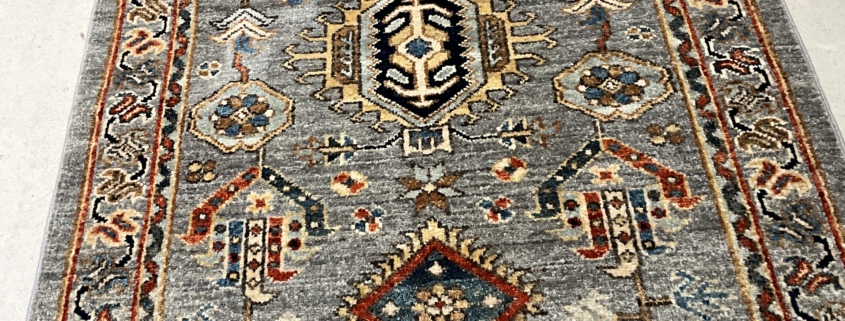The Unique Features of Oriental Rugs in St. Petersburg
St. Petersburg, Florida, known for its vibrant arts scene and beautiful coastal setting, is a city where style and culture converge. Among the many ways residents express their taste and appreciation for beauty, Oriental rugs stand out as a symbol of timeless elegance and craftsmanship. These rugs, with their rich history and intricate designs, bring a touch of global artistry into homes. Here’s a look at the unique features of Oriental rugs and how they complement the aesthetic sensibilities of St. Petersburg.
1. Intricate Designs and Patterns
One of the most striking features of Oriental rugs is their intricate designs. Each rug tells a story through its patterns, which are often influenced by the cultural and geographical origins of the rug.
Persian Rugs: Known for their elaborate floral patterns and medallions, Persian rugs are among the most recognized types of Oriental rugs. These rugs often feature a central medallion surrounded by intricate designs, symbolizing balance and harmony.
Turkish Rugs: These rugs are famous for their bold geometric patterns and rich colors. The designs often include symbols of protection and good fortune, making them not just decorative pieces but also cultural artifacts.
Chinese Rugs: Chinese Oriental rugs often feature motifs inspired by nature, such as dragons, flowers, and landscapes. Their designs are usually more restrained and symmetrical, reflecting Chinese artistic traditions.
In St. Petersburg, where there’s a strong appreciation for art and history, these rugs resonate with homeowners who value both beauty and meaning in their décor.
2. Vibrant Colors
The colors of Oriental rugs are another feature that sets them apart. Made from natural dyes, these colors are rich and varied, often including deep reds, blues, and golds.
Natural Dyes: Traditional Oriental rugs use dyes derived from plants, minerals, and insects, resulting in a depth of color that synthetic dyes can’t replicate. Over time, these colors age beautifully, adding to the rug’s character.
Color Symbolism: In many Oriental cultures, colors have specific meanings. For example, red may symbolize courage and luck, while blue represents peace and solitude. The use of color in these rugs is not just for aesthetic purposes but also for conveying cultural values.
In a city like St. Petersburg, where color and creativity are celebrated, the vibrant hues of Oriental rugs make them a perfect fit for homes looking to add a splash of personality and warmth.
3. Hand-Knotted Craftsmanship
The craftsmanship of Oriental rugs is legendary. Most authentic Oriental rugs are hand-knotted, a process that can take months or even years to complete, depending on the size and complexity of the design.
Knot Density: The quality of an Oriental rug is often measured by its knot density—the number of knots per square inch. Higher knot density generally means a more detailed and durable rug. Some Persian rugs, for example, can have up to 1,000 knots per square inch, showcasing an incredible level of skill and patience.
Artisan Techniques: Each region known for Oriental rug making has its own traditional techniques passed down through generations. This craftsmanship is not just about weaving but also about selecting the best materials, such as high-quality wool or silk, and using natural dyes that enhance the rug’s beauty over time.
In St. Petersburg, where there’s a deep appreciation for artisan goods and craftsmanship, the hand-knotted nature of these rugs makes them highly valued by discerning homeowners.
4. Cultural and Historical Significance
Oriental rugs are not just decorative items; they are steeped in cultural and historical significance. Each rug reflects the history, traditions, and stories of the region where it was made.
Storytelling Through Design: Many Oriental rugs feature designs that tell stories or symbolize historical events. For example, some Persian rugs might depict scenes from ancient Persian literature, while Turkish rugs might incorporate motifs that have been used for centuries in Anatolian culture.
Heritage and Legacy: Owning an Oriental rug is like owning a piece of history. These rugs are often passed down through generations, becoming cherished family heirlooms. In St. Petersburg, where history and heritage are valued, Oriental rugs offer residents a tangible connection to the past.
5. Versatility in Interior Design
While Oriental rugs are traditional, their versatility allows them to fit seamlessly into both classic and modern interiors. Whether used as a statement piece in a contemporary living room or as a complement to antique furniture, these rugs add a layer of sophistication and warmth to any space.
Mixing Styles: In St. Petersburg, where coastal and modern design elements often blend, Oriental rugs can provide a rich contrast. For example, a vibrant Persian rug can add warmth and color to a minimalist modern space, while a neutral-toned Turkish rug can complement a coastal-inspired home.
Layering Textures: Oriental rugs also work well in layered designs, where different textures and materials are combined to create depth and interest. Placing an Oriental rug over hardwood floors or pairing it with soft textiles can enhance the tactile experience of a room.







